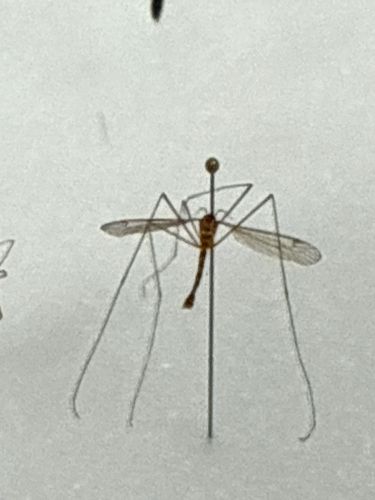Crane Fly
Scientific Name: Tipulidae (various genera and species)
Order & Family: Order: Diptera, Family: Tipulidae
Size: Body length from 2 to 60 mm (0.08 to 2.4 inches), with leg spans much larger, sometimes up to 100 mm (4 inches).

Natural Habitat
Found in a variety of habitats, especially moist areas with abundant vegetation such as forests, grasslands, marshes, and near water sources. Adults are often seen near lights at night.
Diet & Feeding
Adult crane flies typically feed on nectar, decaying plant matter, or sap. Some species do not feed at all as adults. Larvae (known as 'leatherjackets') are often omnivorous, feeding on decaying organic matter, roots, fungi, and sometimes small invertebrates.
Behavior Patterns
Adult crane flies are generally slow, clumsy fliers. They are attracted to lights. Their short adult lifespan is primarily for reproduction. Larvae typically live underground or in aquatic environments, undergoing several molts before pupating.
Risks & Benefits
Crane flies pose no known risks to humans; they do not bite or sting. They are often mistaken for giant mosquitoes, but they are harmless. Larvae can sometimes be considered pests in lawns and agricultural settings due to root feeding, but mostly they contribute to decomposition. Adults are sometimes a food source for birds, bats, and other insects.
Identified on: 9/19/2025